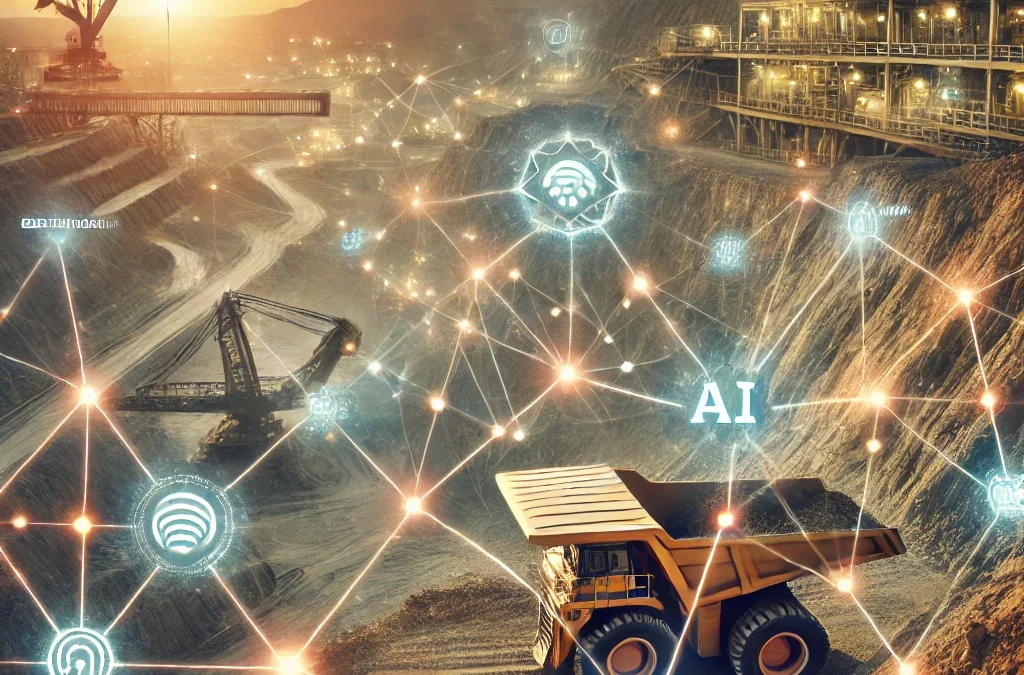In the past, mining success was measured by the amount of material extracted, the speed of operations, and the cost of production. But as the mining industry embraces digital transformation, there’s a new currency of value: data. Mining companies that harness their operational data effectively are not just improving efficiency—they’re unlocking entirely new business models and gaining a competitive edge in a rapidly evolving industry.
1. Mining Operations: A Hidden Treasure Trove of Data
Every piece of mining equipment, every operation, and every moment of downtime generates data. Yet, the majority of this information is either ignored or underutilized. On-site data streams can include:
- Equipment Performance Metrics: From operating hours to hydraulic pressures and temperatures, machines produce a wealth of actionable data.
- Geospatial Data: Advanced sensors and drones generate detailed maps and geological models, offering insights far beyond manual assessments.
- Material Tracking: Conveyor belts, crushers, and sorting equipment provide real-time data on material flow and ore quality.
- Environmental Conditions: Temperature, humidity, and seismic activity sensors monitor site safety and operational viability.
Traditionally, much of this data has been siloed, leading to inefficiencies. But modern AI systems are designed to aggregate, analyze, and act on these insights in ways that were unimaginable just a decade ago.
2. The Real Value of Mining Data
Why is data such a game-changer? Because it enables mining companies to optimize operations in ways that are not immediately obvious. Here’s how:
- Predictive Insights: AI-powered systems can predict equipment failures, ore quality trends, and even weather-related disruptions, allowing operators to plan proactively.
- Resource Allocation: With data-driven insights, companies can allocate resources more effectively—whether it’s deploying personnel, fuel, or maintenance crews.
- Efficiency Gains: Data analytics can reveal bottlenecks and inefficiencies that might be invisible to human operators, leading to cost savings across the board.
- Enhanced Sustainability: By monitoring energy usage, emissions, and waste, companies can meet sustainability goals while cutting costs.
“Data is no longer a byproduct of mining—it’s becoming the foundation for smarter, more efficient operations,” says an industry leader.
3. Monetizing Data: A New Frontier
Here’s something few people are talking about: mining companies don’t just need to use their data—they can sell it.
- Geological Data Licensing: Geological surveys and 3D maps of mining sites can be sold or licensed to other industries, such as energy, construction, or academic research.
- Operational Benchmarks: Aggregated, anonymized operational data can be shared with equipment manufacturers to help them improve their designs.
- Environmental Data Partnerships: Data on biodiversity, weather, or air quality collected by mining companies can be valuable to environmental organizations, governments, and researchers.
Mining companies that treat their data as a strategic asset are already diversifying their revenue streams by creating entirely new business models.
4. Challenges in Harnessing Mining Data
Of course, this transformation doesn’t come without challenges:
- Data Silos: Many mining sites still operate with disconnected systems that make it difficult to aggregate and analyze data.
- Data Overload: Mining operations generate terabytes of data daily, and separating useful insights from noise requires advanced tools.
- Security Risks: As mining becomes more digital, protecting data from cyberattacks is a growing concern.
- Skills Gap: Turning data into actionable insights requires a workforce skilled in data science, AI, and machine learning.
However, companies that address these challenges will emerge as industry leaders.
5. How AI Unlocks the Full Potential of Mining Data
AI-driven platforms like Jebi Central and Jebi AI Pipeline are revolutionizing how mining data is used:
- Real-Time Analysis: AI processes data streams instantly, providing actionable insights without delay.
- Pattern Recognition: Machine learning algorithms detect patterns in equipment behavior, ore quality, and market trends that humans might miss.
- Scalability: AI systems can process data from multiple sites simultaneously, offering a unified view of operations.
At Jebi Technologies, our mission is to empower mining companies to not only use their data but to thrive on it. Our solutions bridge the gap between raw data and actionable intelligence, helping companies stay ahead in a competitive landscape.
6. The Future of Mining Data
As data continues to transform the mining industry, here are some trends to watch:
- Autonomous Mining: AI-driven data will power fully autonomous equipment, from drilling rigs to haul trucks.
- Integrated Ecosystems: Mining sites will become fully connected, with data flowing seamlessly between equipment, software, and human operators.
- AI-Driven Market Predictions: By analyzing market trends alongside operational data, companies can make smarter decisions about when and where to sell their products.
- Carbon Accounting: AI tools will make it easier for mining companies to track and reduce their carbon footprint, ensuring compliance with future regulations.
Conclusion: Data as the New Gold Mining companies that see data as a strategic asset, not just an operational byproduct, are poised to lead the industry into the future. By investing in AI-powered tools and systems, they can unlock new efficiencies, diversify revenue streams, and gain a competitive edge.
At Jebi Technologies, we help companies turn their data into gold—figuratively and literally. Ready to take the next step? Let us show you how to transform your data into a strategic advantage.
